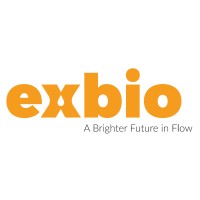CD19 Monoclonal / PerCP / 4G7
Product Details
| Description | CD19 is a transmembrane glycoprotein of Ig superfamily expressed by B cells from the time of heavy chain rearrangement until plasma cell differentiation. It forms a tetrameric complex with CD21 (complement receptor type 2), CD81 (TAPA-1) and Leu13. Together with BCR (B cell antigen receptor), this complex signals to decrease B cell treshold for activation by the antigen. Besides being signal-amplifying coreceptor for BCR, CD19 can also signal independently of BCR coligation and it turns out to be a central regulatory component upon which multiple signaling pathways converge. Mutation of the CD19 gene results in hypogammaglobulinemia, whereas CD19 overexpression causes B cell hyperactivity. | |
|---|---|---|
| Conjugate | PerCP | |
| Clone | 4G7 | |
| Target Species | Human | |
| Applications | FC, ICC, WB | |
| Supplier | EXBIO | |
| Catalog # | Sign in to view product details, citations, and spectra | |
| Size | ||
| Price | ||
| Antigen | ||
| Host | ||
| Isotype |
About CD19
This gene encodes a member of the immunoglobulin gene superfamily. Expression of this cell surface protein is restricted to B cell lymphocytes. This protein is a reliable marker for pre-B cells but its expression diminishes during terminal B cell differentiation in antibody secreting plasma cells. The protein has two N-terminal extracellular Ig-like domains separated by a non-Ig-like domain, a hydrophobic transmembrane domain, and a large C-terminal cytoplasmic domain. This protein forms a complex with several membrane proteins including complement receptor type 2 (CD21) and tetraspanin (CD81) and this complex reduces the threshold for antigen-initiated B cell activation. Activation of this B-cell antigen receptor complex activates the phosphatidylinositol 3-kinase signalling pathway and the subsequent release of intracellular stores of calcium ions. This protein is a target of chimeric antigen receptor (CAR) T-cells used in the treatment of lymphoblastic leukemia. Mutations in this gene are associated with the disease common variable immunodeficiency 3 (CVID3) which results in a failure of B-cell differentiation and impaired secretion of immunoglobulins. CVID3 is characterized by hypogammaglobulinemia, an inability to mount an antibody response to antigen, and recurrent bacterial infections. Alternative splicing results in multiple transcript variants encoding distinct isoforms. [provided by RefSeq, Jul 2020]
This gene encodes a member of the immunoglobulin gene superfamily. Expression of this cell surface protein is restricted to B cell lymphocytes. This protein is a reliable marker for pre-B cells but its expression diminishes during terminal B cell differentiation in antibody secreting plasma cells. The protein has two N-terminal extracellular Ig-like domains separated by a non-Ig-like domain, a hydrophobic transmembrane domain, and a large C-terminal cytoplasmic domain. This protein forms a complex with several membrane proteins including complement receptor type 2 (CD21) and tetraspanin (CD81) and this complex reduces the threshold for antigen-initiated B cell activation. Activation of this B-cell antigen receptor complex activates the phosphatidylinositol 3-kinase signalling pathway and the subsequent release of intracellular stores of calcium ions. This protein is a target of chimeric antigen receptor (CAR) T-cells used in the treatment of lymphoblastic leukemia. Mutations in this gene are associated with the disease common variable immunodeficiency 3 (CVID3) which results in a failure of B-cell differentiation and impaired secretion of immunoglobulins. CVID3 is characterized by hypogammaglobulinemia, an inability to mount an antibody response to antigen, and recurrent bacterial infections. Alternative splicing results in multiple transcript variants encoding distinct isoforms. [provided by RefSeq, Jul 2020]
About PerCP
Peridinin-Chlorophyll-Protein (PerCP) is a red-emitting fluorescent protein isolated from algae that can be excited by the 488 nm blue laser and captured with a 670/30 nm bandpass filter. PerCP exhibits a large Stokes' Shift, with an excitation peak at 482 nm and an emission peak at 675 nm. PerCP is was historically used in flow cytometry, however it is highly susceptible to photobleaching and has poor stability. Alternatives like BB700, NovaFluor Blue 690 or PerCP-eFluor™ 710 are preferred. PerCP is a generic dye that has no sole manufacturer.
Peridinin-Chlorophyll-Protein (PerCP) is a red-emitting fluorescent protein isolated from algae that can be excited by the 488 nm blue laser and captured with a 670/30 nm bandpass filter. PerCP exhibits a large Stokes' Shift, with an excitation peak at 482 nm and an emission peak at 675 nm. PerCP is was historically used in flow cytometry, however it is highly susceptible to photobleaching and has poor stability. Alternatives like BB700, NovaFluor Blue 690 or PerCP-eFluor™ 710 are preferred. PerCP is a generic dye that has no sole manufacturer.
Experiment Design Tools
Panel Builders
Looking to design a Microscopy or Flow Cytometry experiment?
Validation References
Reviews & Ratings
| Reviews |
|---|
Looking for more options?
3840 CD19 antibodies from over 56 suppliers available with over 217 conjugates.





